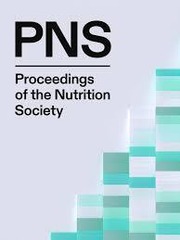The anticancer properties of bioactive phytochemicals within berries are of interest given the inverse correlation of fruit and vegetable consumption with the incidence of colorectal cancer (CRC)Reference Johnson 1 . Berries are one of the most commonly consumed sources of polyphenols and these compounds may exert protective effects against initiation of CRC by reducing DNA damageReference Brown 2 . The aim of this study was to assess the bioactivity of raspberry phytochemicals identified in vivo with respect to markers of gut health.
Using non-targeted LC-MSn of ileal fluids from eleven ileostomates who completed a raspberry feeding studyReference McDougall 3 , we identified novel compounds and putatively identified major components as fruit triterpenoid glycosides. The major triterpenoid had an apparent MW of 680 and could be purified from raspberry seeds. The anti-genotoxic activity of this triterpenoid-enriched fraction (TRF) was assessed by COMET assay using HT29 (adenocarcinoma) and CCD841 CoN (normal epithelial) cells. For the in vitro studies both cell lines were incubated for 24 h with 100 nM of either the raspberry TRF or the positive control, a pure synthetic triterpenoid 2-cyano-3,12-dioxoolean-1,9-dien-28-oic acid (CDDO) and then challenged with 75μM hydrogen peroxide. Further, we determined if the treatments modulated gene expression of the Nrf2-ARE pathway involved in oxidative stress cytoprotectionReference Saw and Kong 4 , namely nuclear factor (erythroid-derived 2)-like 2 (Nrf2), NAD(P)H Dehydrogenase, Quinone-1 (NQO1) and Heme oxygenase-1 (HO-1)4. Experiments were carried out as independent triplicates. ANOVA was applied to test for significant differences between means compared to untreated control using Dunnett T test (post hoc).
Treatment of HT29 cells with 100 nM of with either TRF or CDDO significantly decreased DNA damage by ~40–45 % in response to oxidative challenge (p < 0·01). In the normal CCD841 CoN cells, DNA damage was also reduced by ~50–55% for both treatments (p < 0·01). Efficacy between cell lines was not significantly different. With respect to Nrf2-ARE pathway in HT29 & CCD841 CoN cells, CDDO treatment significantly increased expression (p < 0·05) of all the target genes (Nrf2, NQO-1 and HO-1). TRF treatment of HT29 cells significantly increased Nrf2 expression (p < 0·05), but it resulted in a decreased expression of NQO1 and HO-1 (p < 0·05). In CCD841 CoN cells, TRF treatment increased expression of Nrf2 and NQ1 but significantly reduced the expression of HO-1(p < 0·05).
To conclude, we identified a novel raspberry triterpenoid (TRF) from ileal fluid following raspberry consumption; therefore these components survive intestinal digestion and would likely enter the colon in vivo. We have subsequently demonstrated that the colon-available TRF can reduce DNA damage in normal colonocytes, mediated in part by the Nrf2 pathway, at a physiologically relevant concentration.
This work was supported by a grant from the National Processed Raspberry Council.


